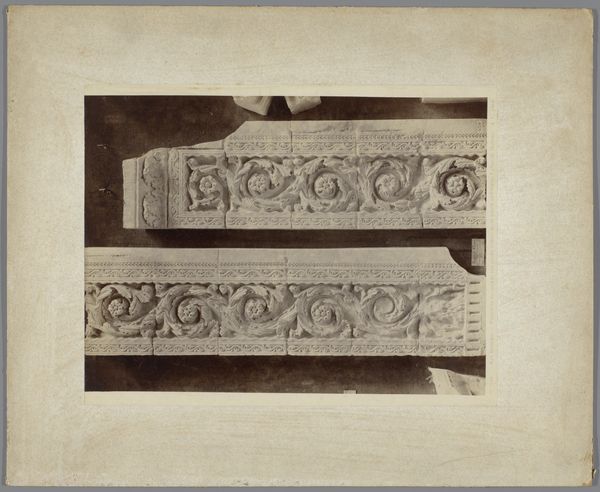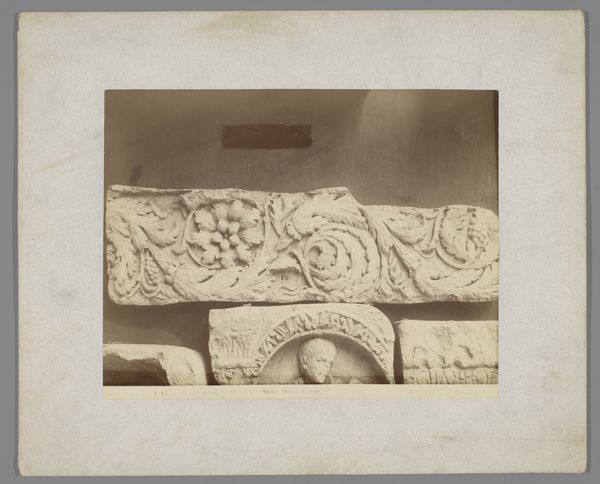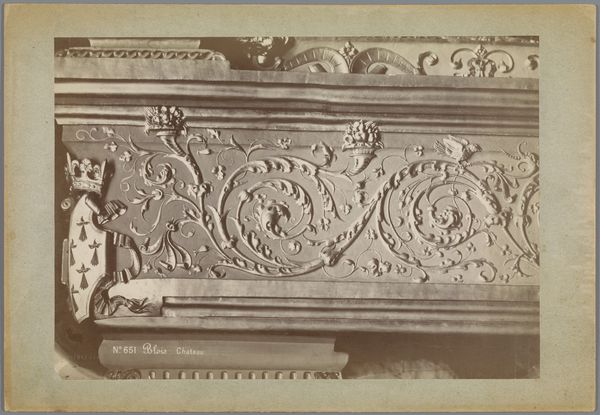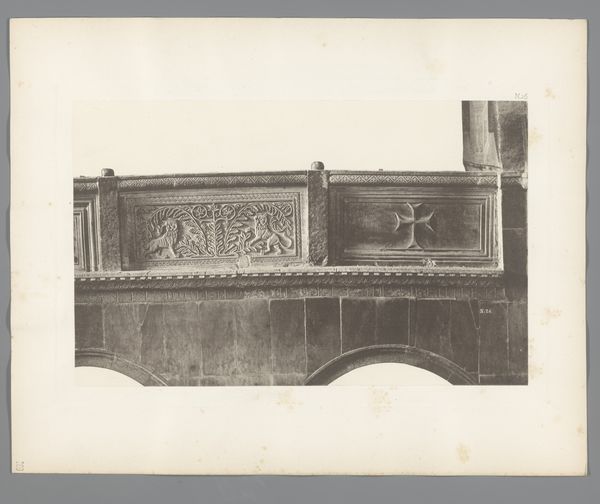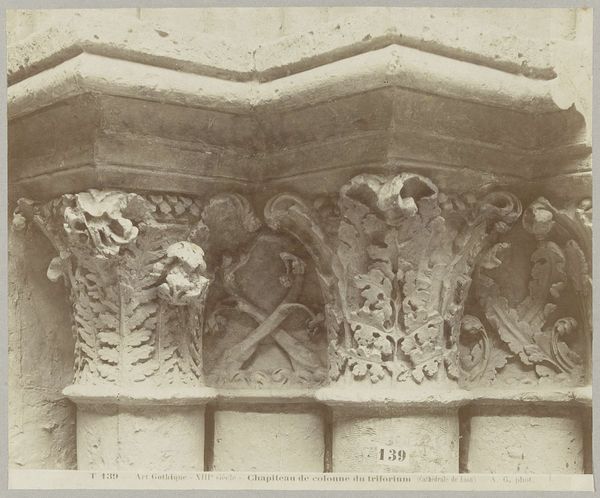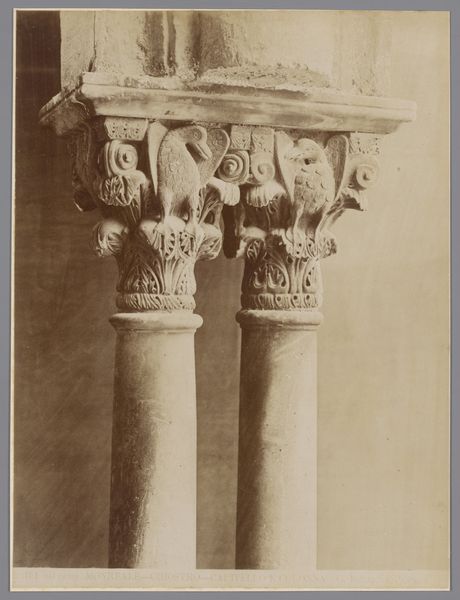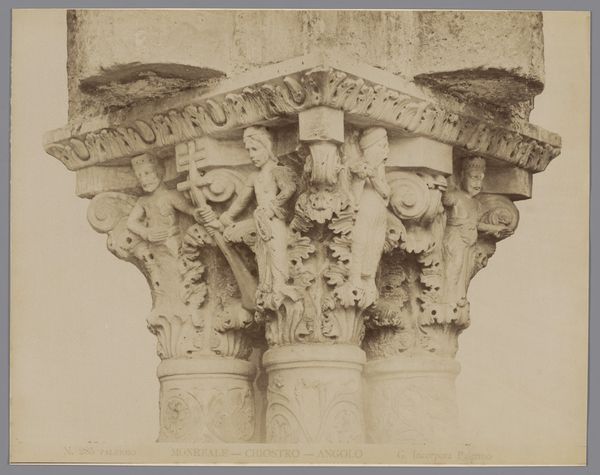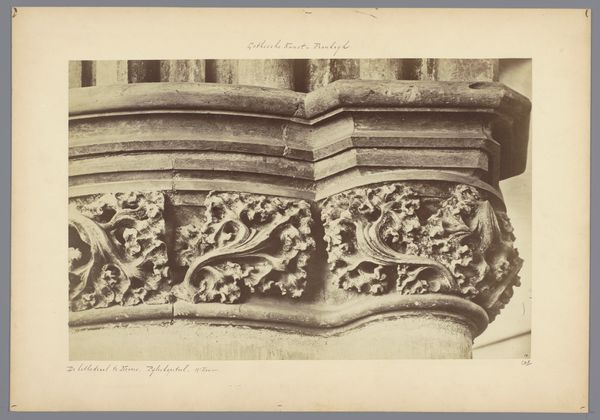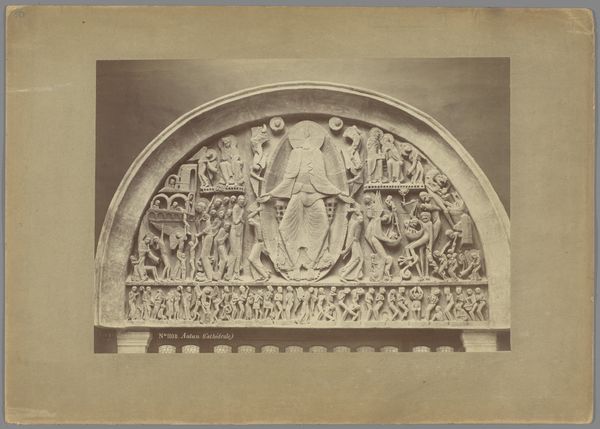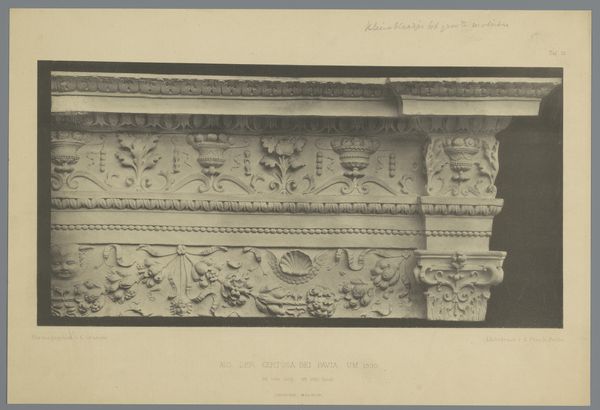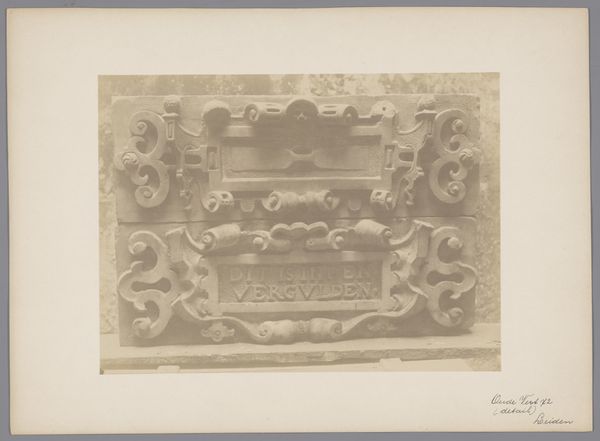
Detail van de pandhof van de San Giovanni in Laterano in Rome c. 1875 - 1900
0:00
0:00
daguerreotype, photography
#
daguerreotype
#
photography
#
ancient-mediterranean
#
building
Dimensions: height 219 mm, width 272 mm
Copyright: Rijks Museum: Open Domain
Editor: Here we have Gustave Eugène Chauffourier’s "Detail van de pandhof van de San Giovanni in Laterano in Rome," a daguerreotype from the late 19th century. It’s… well, it’s a wall. What am I missing? Curator: The material structure itself, Editor. Note the photographer's studied arrangement of geometric forms. We have squares, circles, diamonds--all presented in varying textural planes, united by shadow. What visual effect is achieved? Editor: A kind of rhythmic balance? But there's a tension, too, between the ornate details and the stark photographic medium. Curator: Precisely! Observe the upper register--the carved figures and foliage, anthropomorphic ornamentation placed above, juxtaposed with flat geometrical shapes. This stratification is echoed in the tonal values: the harsh sunlight emphasizing the decay and patina, yet somehow it also looks crisp. What is this communicating? Editor: I suppose that while the image is of a building detail, the artist wants us to consider something more than just architecture. Maybe, mortality or... time itself. Curator: Time is a crucial dimension in photographic analysis, specifically, how the formal elements are employed to articulate an ephemeral, almost intangible idea. Think of semiotics – how each element can act as a signifier pointing to a broader concept. Editor: It's interesting how limiting the subject to pure form can actually expand your understanding. I was stuck on it just being a building at first. Curator: Indeed, we started with the concrete but were able to transition to consider abstraction through close examination of visual arrangement and theoretical constructs. Editor: Now I see a dialogue of shapes and time.
Comments
No comments
Be the first to comment and join the conversation on the ultimate creative platform.
